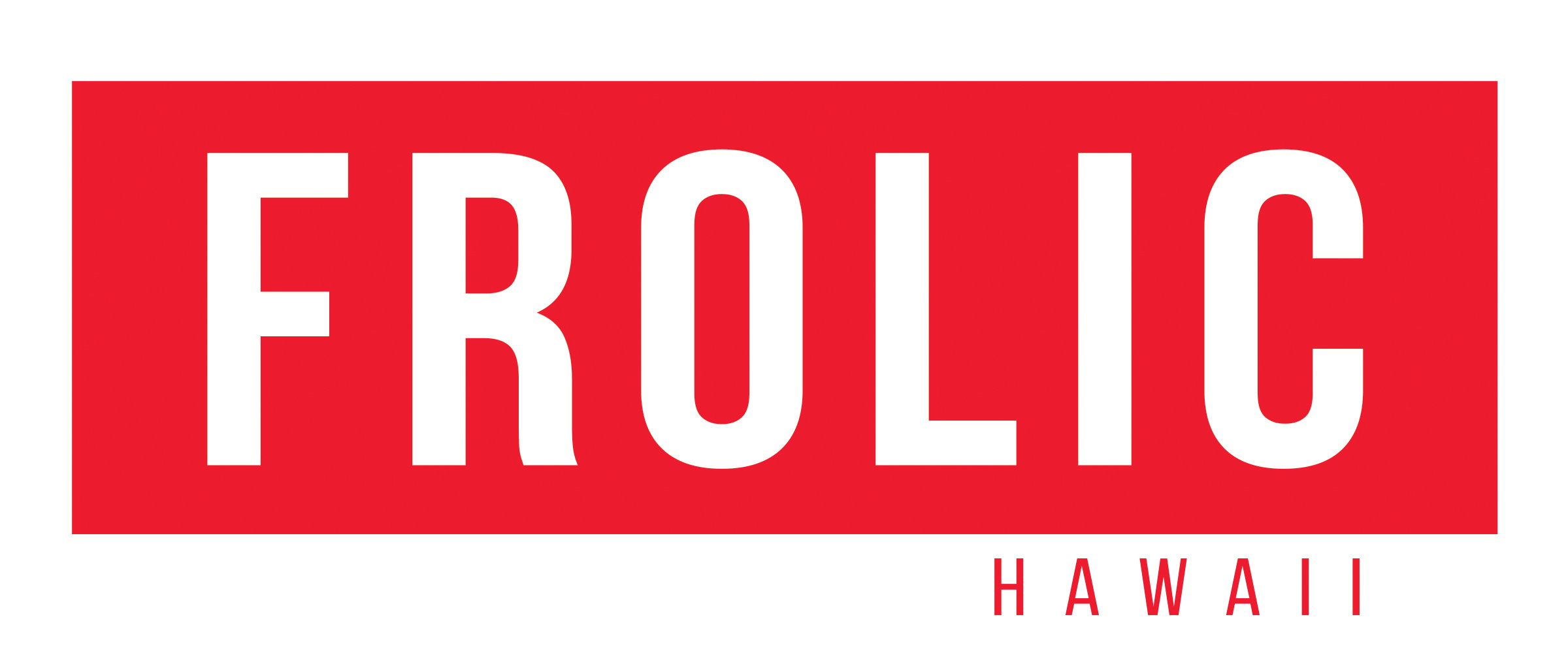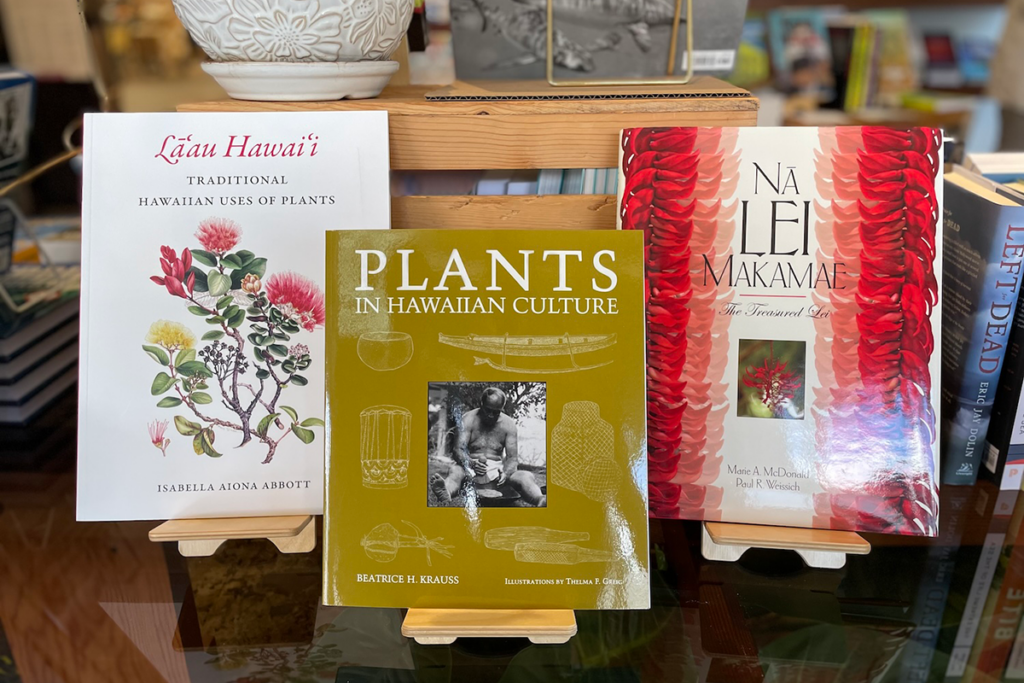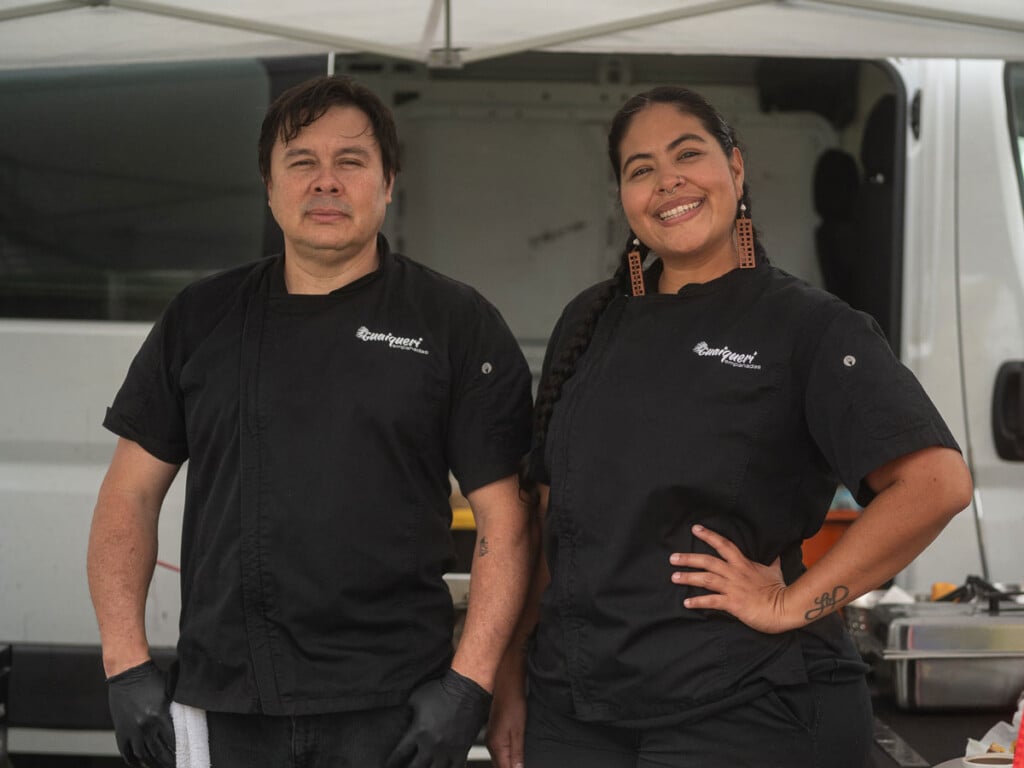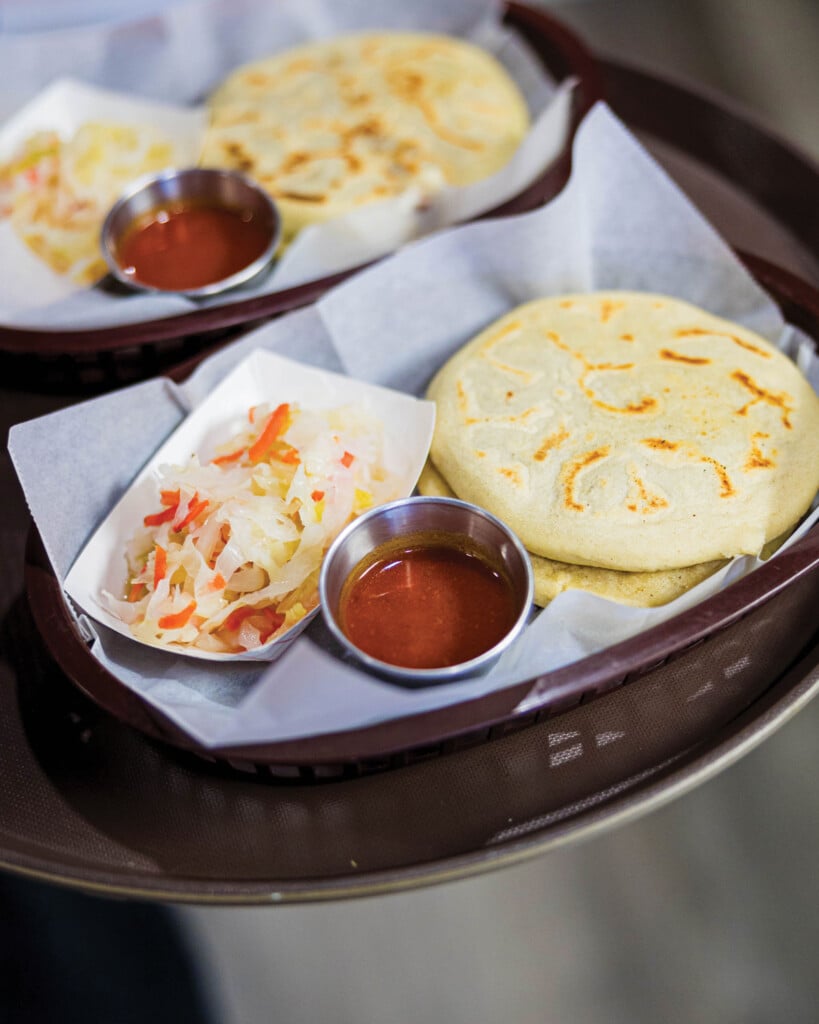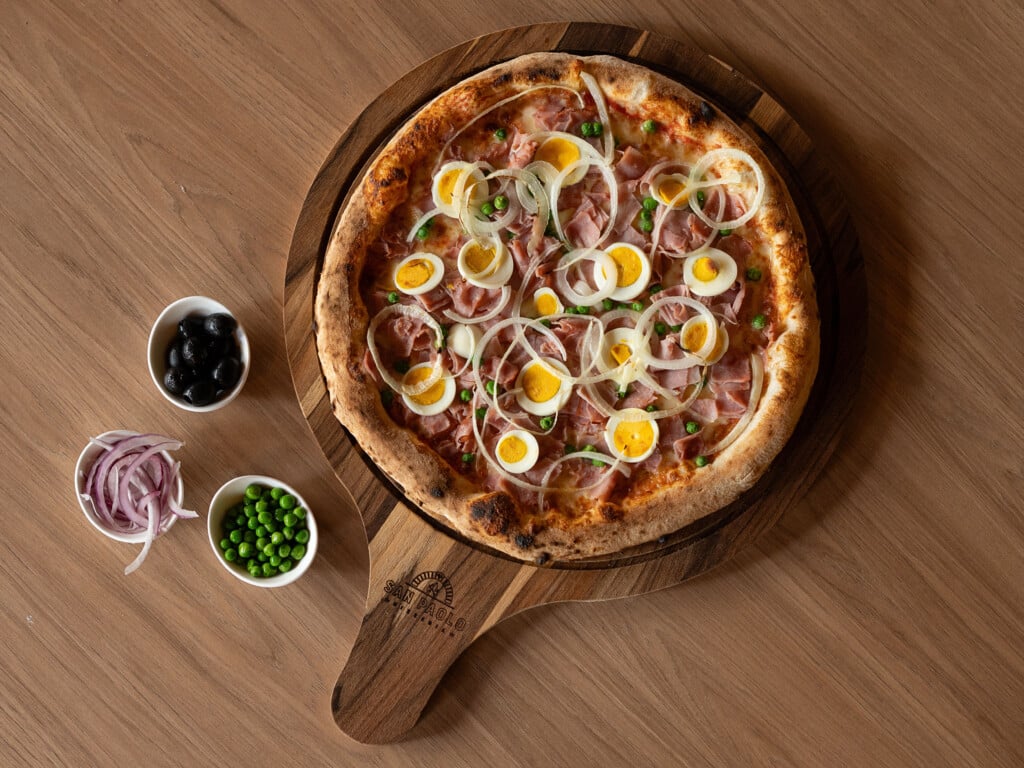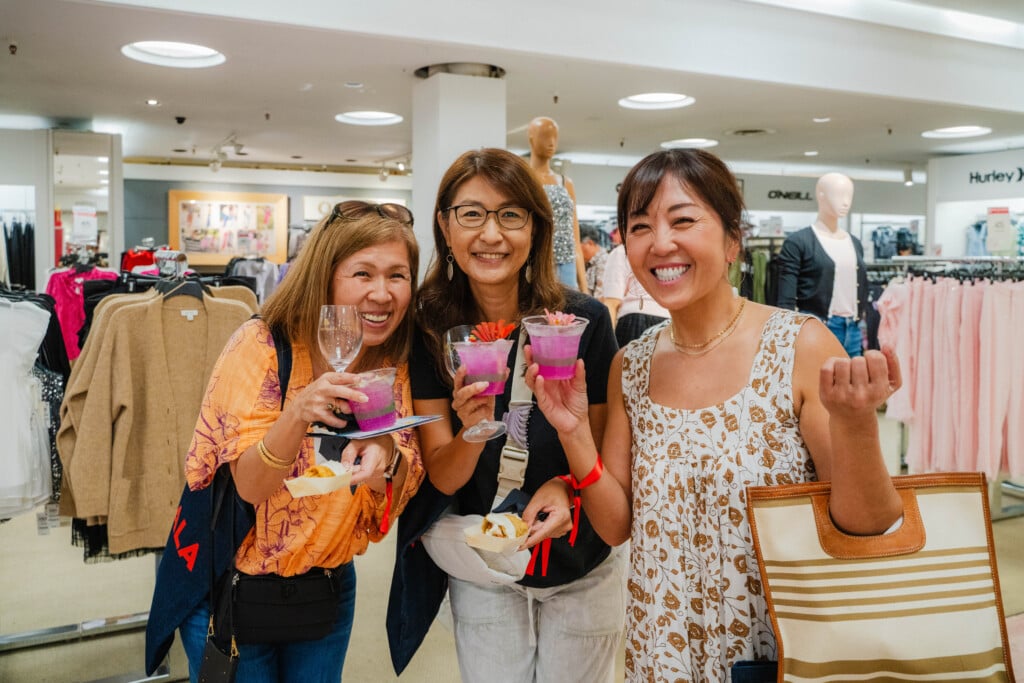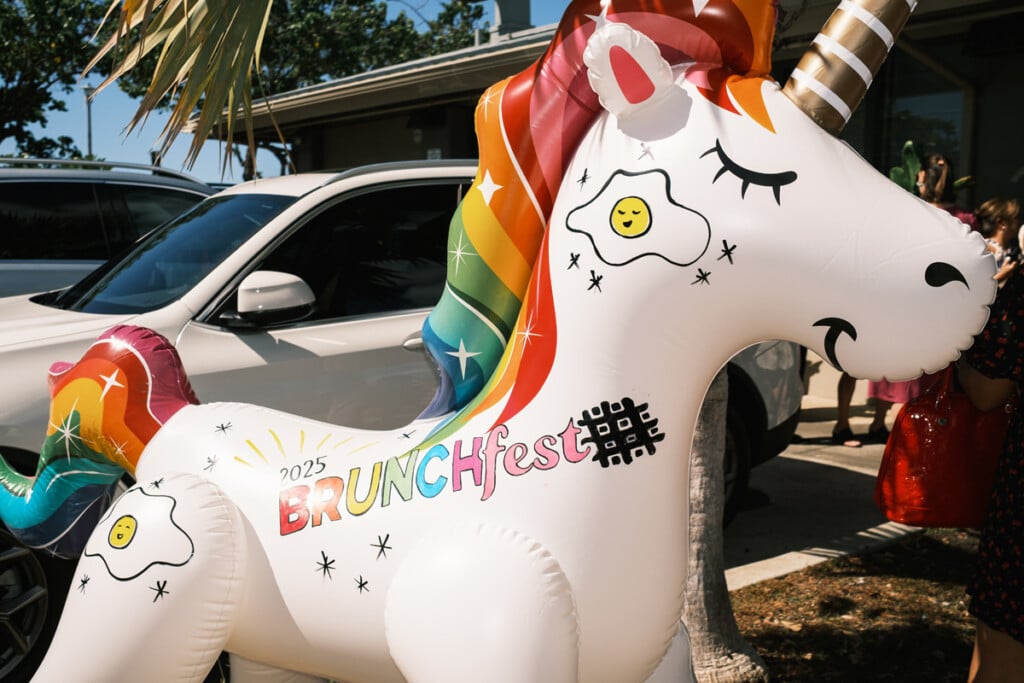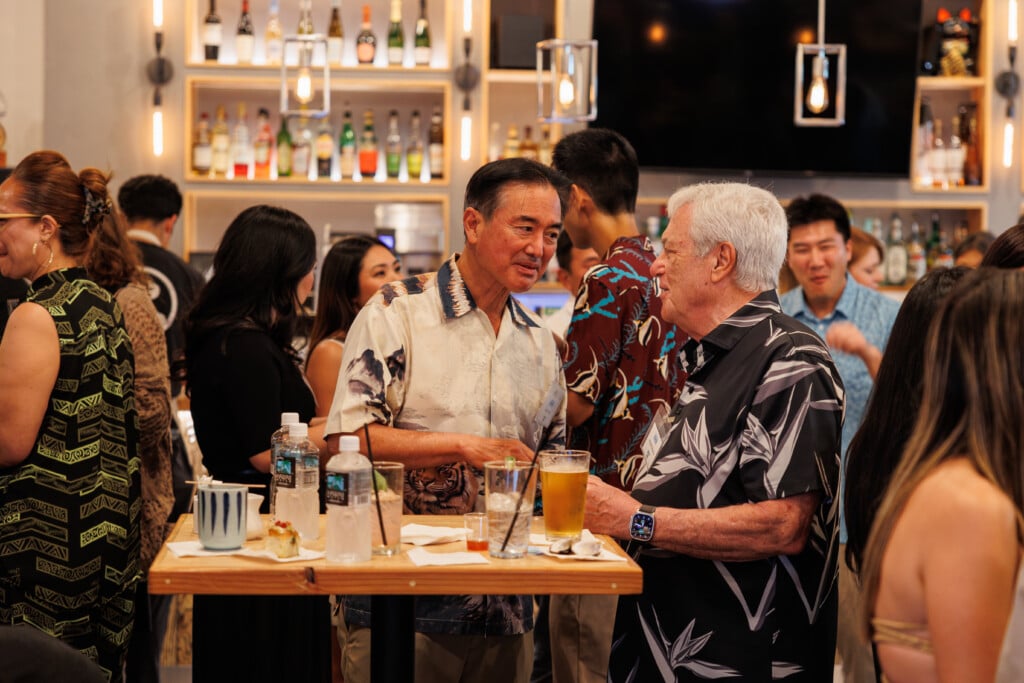On Kapahulu, the Zen of Tea and Gelato
Next to Aburiya Ibushi, Cha to Gelato Zen makes tea ceremony a casual evening ritual—with a side of dessert.

Photo: Thomas Obungen
You’re wrapping up dinner, and you still have room for a nightcap. You might even have a separate dessert stomach. If you’re not in the mood for a neighborhood bar or boba shop and a chill scene is more your speed, Cha to Gelato Zen is where you’ll end up.
Zen brings cha or Japanese tea, house-made gelato and light snacks together in a ceremonious way that elevates the ritual of unwinding after a long day. In a space imbued with a casual sense of calm, you feel relaxed enough to continue a dinner conversation. Subdued lighting enhances the mood.

Photo: Thomas Obungen
For the full experience, dive right into a tea-and-gelato pairing. It starts with your tea selection. Take a whiff from the tiny glass bottles of sencha, hojicha and gyokuro tea leaves. The last, known for a full-bodied flavor and inherent umami, is the most intense. Then select two flavors of gelato—choices include Uji matcha, black sesame, azuki, kinako, miso and a dairy-free yuzu ginger sorbet. Different flavors pair better with different teas. The two gelato choices are $20; the cost for the tea is extra. This is not just tea and gelato, it’s something of a journey and an experience.
Then take a seat at the counter as Takeki So begins the tea ceremony. For the pairing, he’ll brew the tea in three separate steeps in a kyusu pot, using hot water from a larger iron kettle called a chagama. So says that water heated in a chagama is better for brewing tea.

Photo: Thomas Obungen
He’ll invite you to smell the dry tea leaves and even taste them first. Then So ladles one hishaku of water at a time into a teacup, sensing its warmth through the porcelain before pouring it over the tea leaves. Watching him do this over and over will put you in a state of zen.

Photo: Thomas Obungen
Your scoops of gelato, set in crisp monaka shells, arrive with the first and second pour. Take your time to taste the nuances of the tea, with and without bites of gelato. What is bitter at first mellows into woodsy or grassy notes, followed by a subtle sweetness. Late in the evening, I pair low-caffeine hojicha with scoops of azuki and kinako gelato. The kinako gelato includes small dishes of kinako powder and kuromitsu syrup. I love the roasted flavor of hojicha; it complements the nutty notes of roasted soybean powder and the caramelized sugar in the kuromitsu.
The miso gelato incorporates white and saikyo miso, the latter from Kyoto. It’s served with raisins that, eaten with the gelato, taste as though they were soaked with rum. You might expect this one to be savory, but it is one of the sweeter options and my favorite of the bunch.

Photo: Thomas Obungen
Matcha, sourced from Japan’s major tea prefectures of Shizuoka and Kyoto, is becoming the draw at Zen. Whisked by hand in a chawan, matcha is enjoyed hot, without flavorings, or as a latté over ice with or without flavored syrups. Alternative milks include almond and soy. On my initial visit, I try the highest grade of matcha Samidori from Uji, Japan, prepared hot ($11). This should be reserved for connoisseurs who appreciate the sharp bitterness of straight matcha.

Photo: Thomas Obungen
If a matcha latté is more your cup of tea, I challenge you to find one prepared with more grace and attention to detail. On a daytime visit, I order mine with whole milk and vanilla syrup over ice ($7.50, add $1 for syrup), and it is essentially drinkable matcha ice cream. So, the proprietor, sprinkles the matcha with a bit of water in a bowl. As he whisks, he adds more water and pours the bubbling green foam over ice and milk before dusting the cup with a final hit of matcha powder.
SEE ALSO: Here’s the Scoop on Kaimukī’s New Matcha and Coffee Spot
In later visits, the matcha latté recipe may have changed—it tastes more milk-forward. You might be able to ask for less milk, but I haven’t tried. Although it’s unlikely you haven’t tried matcha yet, the latté might be a better way to ease into it. For the price, I come to appreciate the details that go into its creation, down to the Mount Fuji-shaped glassware.

Photo: Thomas Obungen
There’s food here too. The anko butter sandwich, inspired by Nagoya’s famous ogura toast, is the most Japanese thing I’ve eaten in a long time. A lightly toasted sourdough bun, made by Dell’s Kitchen & Bakery with sake kasu or lees, gets a helping of sweet red bean paste and a generous knob of Kerrygold butter. The sweet-salty-sour combo is blissful and has the balance you seek from Japanese cuisine.
Other snacks on the menu include mentaiko bread, mentaiko cream pasta and a flight of tsukemono pickles (yes, really).

Photo: Thomas Obungen
It was always the dream of So, a half-Korean, half-Japanese native of Fukuoka, to open a tea café. Having cooked in and managed restaurants in Hawai‘i for the Japanese group Sasaya Holdings, he saw an opportunity when Waikīkī Chocolates vacated the space next to Aburiya Ibushi.
Today, Cha to Gelato Zen is an oasis from busy Kapahulu and from life itself. I find it best to come alone or with no more than two people. The six counter seats are the only place to enjoy the tea-and-gelato pairing course. Soon, So says, he may need to take reservations to manage the waves of those seeking midnight matcha and gelato.
It is supposed to be zen after all.
Open 2 to 5 p.m., 6 to 11 p.m., Monday to Friday and 2 to 5 p.m., 6 to 11:30 p.m., Saturday to Sunday, closed Wednesdays, 744 Kapahulu Avenue, @cha_to_gelato_zen
